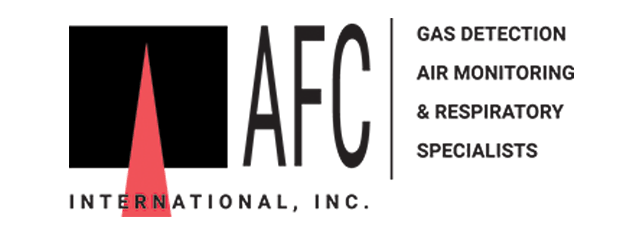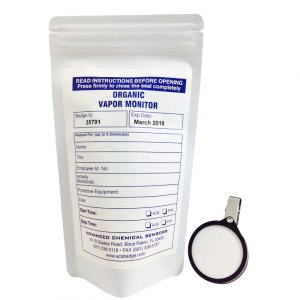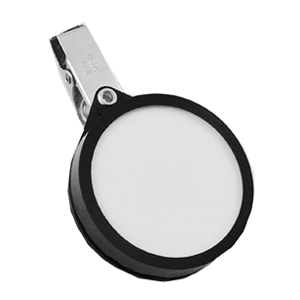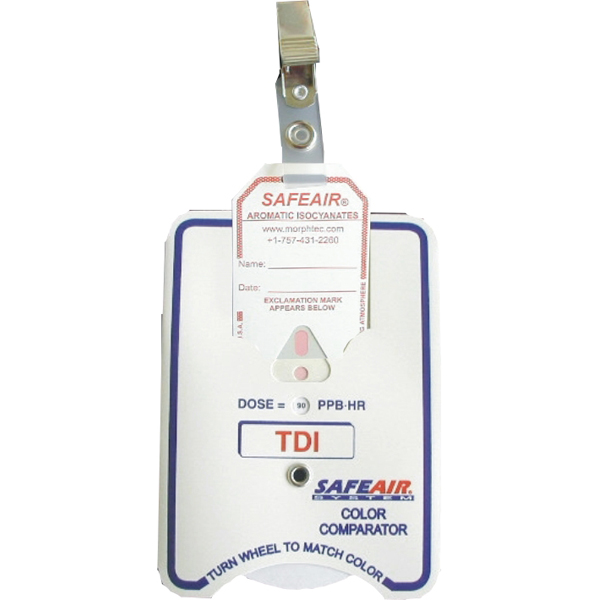Description
Description
Non-Charcoal Organic Vapor Monitoring Badges are available for single chemicals or a full analysis which detects up to 100 chemicals. A monitoring badge is a cost saving method because there is no maintenance cost, no extensive training required and the all-inclusive pricing model is simple.
These badges give you a cost effective air sampling method that measures exposure to many regulated toxic vapors. This is a huge improvement over the mechanical sampling pump that was used. A solid adsorbent separated by a porous membrane replaced the pump, although is acts like a pump with no moving parts.
For occupational exposure, these badges meet OSHA requirements and ISO 9001:2015 an ISO/IEC:2005 standards for exposure times ranging from 15 minutes to more than 8 hours. This analysis is conducted in an American Industrial Hygiene Association Laboratory Accreditation Programs accredited lab using OSHA or NIOSH validated methods.
How Organic Vapor Monitoring Badges Work
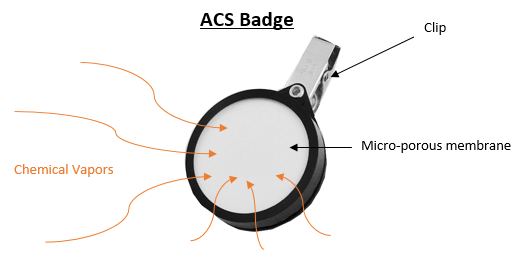
Badges are worn by the employee during a sampling period. There’s no liquid or metal mechanics involved in badge sampling, so the process is not cumbersome at all.
As for how the badge works, there is a microporous membrane that chemical vapors pass through. Under the membrane are special adsorbents that collect the vapors at a fixed rate. Our badges meet and exceed OSHA requirements, and OSHA/NIOSH validated methods are used in ACS’s AIHA-LAP, LLC-accredited laboratory.
Step 1: Expose the badge
Workers clip the badge in or near a breathing zone, most likely on their person, to measure their personal exposure level to certain chemicals. Badges can be placed in rooms to measure the concentration of chemicals in the air. When clipped on a person, the badge is small and lightweight enough to not interfere with worker activities.
To test the air quality of your home, office, or another environment, leave the badge in the area for 24 hours at least five feet from the floor. There’s no need to hire expensive consultants to find out air quality.
Step 2: Record Start Time and Stop Time
Record the requested information on the outside of the pouch that will enclose the badge after testing is complete. The required information includes the start time and stop time of testing.
Step 3: Return the Badge for Analysis
When the test is finished, put the badge back into the pouch, make sure the ziplock is completely sealed, and mail it back to ACS Lab for analysis. Our normal turnaround time is 48–72 hours after samples have been received. Some chemical analysis may take longer than 72 hours. Reports can be emailed, faxed, or mailed.
Workers can clip the badge near the breathing zone to measure person exposure level or place it in a room to measure area concentration. Badges are small and lightweight and do not obstruct the worker activities.
For testing indoor air quality or area monitoring simply leave the badge in the area for 24 hours.
To test indoor air quality of your home, office or workplace, leave the badge in the area at least 5 ft off the floor for 24 hours. No need to hire expensive consultants, then follow the steps above.
